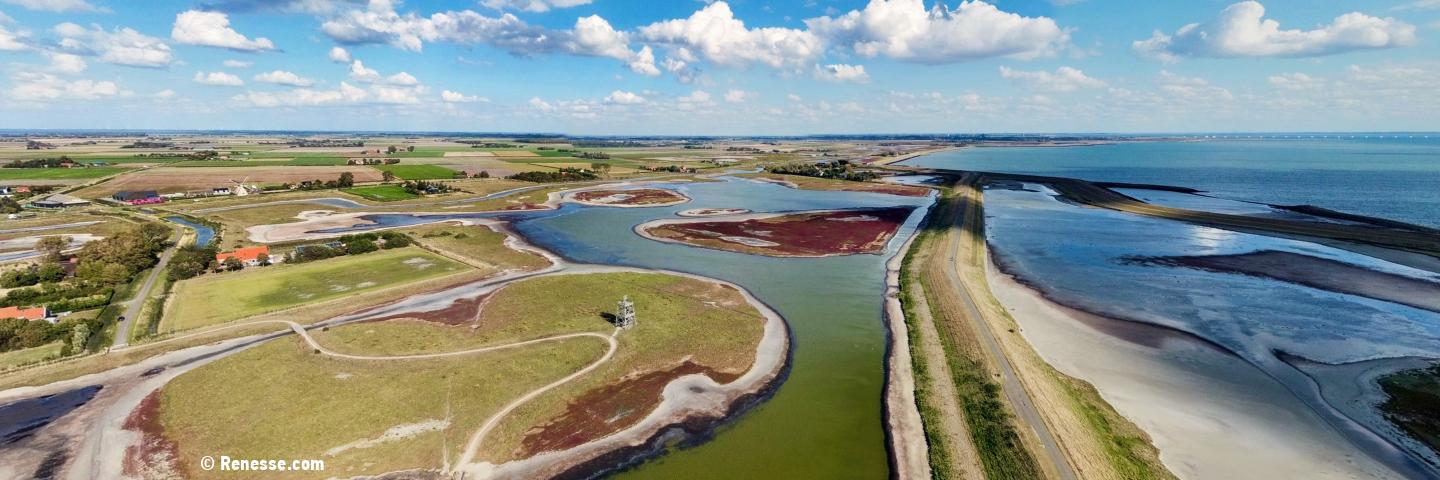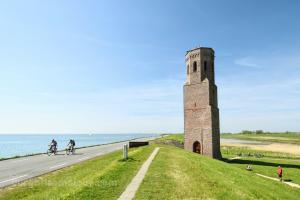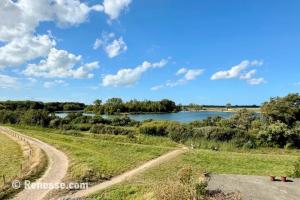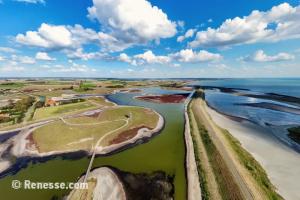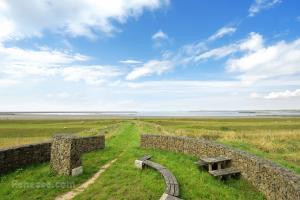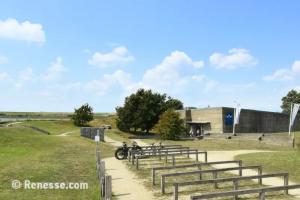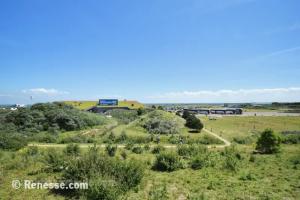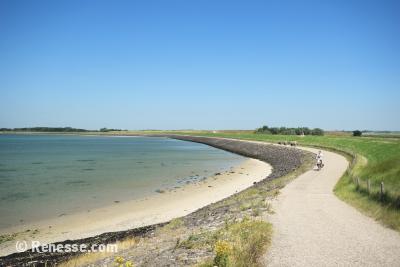
National Park Oosterschelde is, with more than 37,000 hectares, the largest national park in the Netherlands. It is located between the Zeeland islands of Schouwen-Duiveland, Tholen and Noord-Beveland.
- Tidal area: largely made up of water, mudflats, salt marshes, sandbanks and dykes. Tides create a constantly changing landscape every day.
- Low tide: exposed sandbanks full of birds and resting seals.
- High tide: a vast body of water that gives the area its unique dynamics.
- Activities: a paradise for walkers, cyclists, birdwatchers and those seeking peace and quiet. Popular with divers, sailors and nature lovers eager to explore the water.
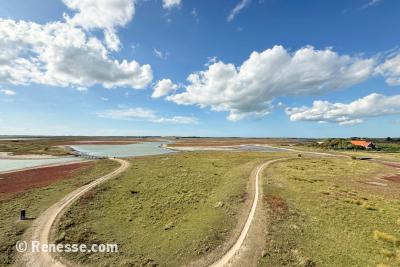
What makes the Oosterschelde unique?
- Former sea arm: once part of the North Sea, still openly connected to the sea despite the Delta Works.
- Dynamic ecosystem: tides and currents keep the area vibrant and full of variety.
- Biodiversity: more than 10,000 species of plants and animals.
- Seals and porpoises: often visible from the dykes or during boat trips.
- Diving paradise: internationally renowned for cuttlefish, lobsters and colourful underwater flora.
- Birds: spoonbills, avocets, geese and countless migratory birds.
- Peace and space: wide-open views and silence – without mass tourism.
National Park Oosterschelde consists of various sub-areas, each with its own character. Below is an overview of the most important and beautiful places on Schouwen-Duiveland.

